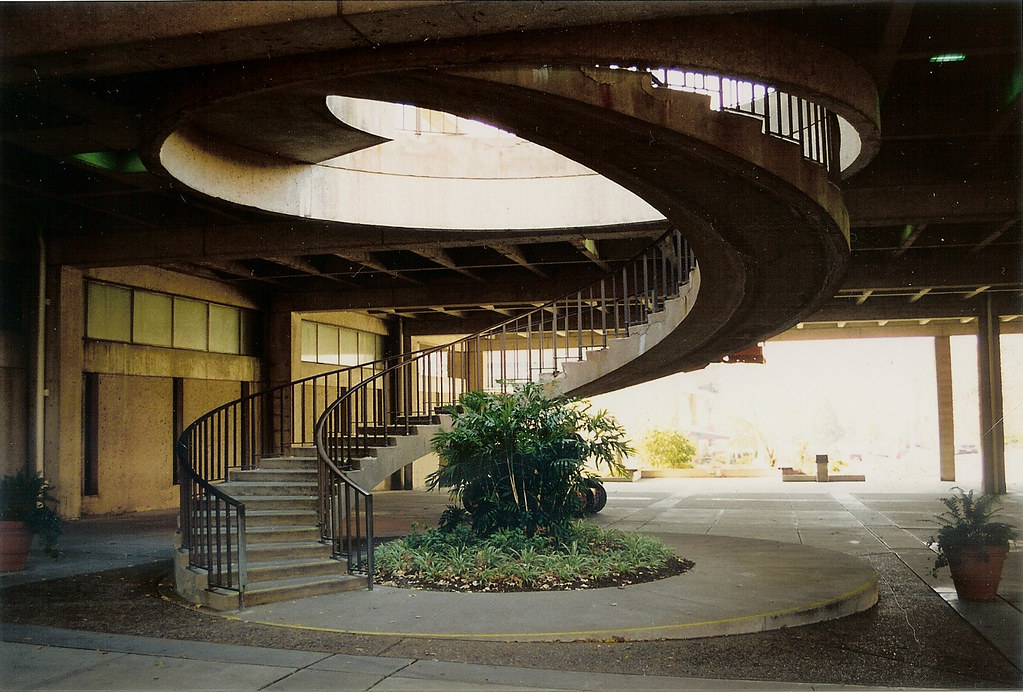
This elegant floating helical stair was located near the entrance to the Courts Building of the St. Louis County Government Center in Clayton. It was completed in 1972 and was probably the only redeeming element of the brutalist styled complex consisting of the County Administration Building, the Courts Building and a large elevated plaza that had been designed by Murphy, Downey, Wofford & Richman in 1968.
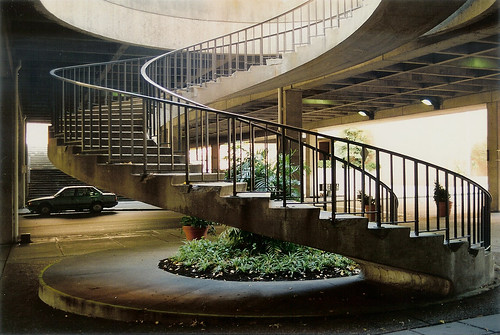
The elevated plaza spanned across Carondelet Avenue connecting the new Courts Building with the St. Louis County Police Headquarters building on Forsyth by Preston Bradshaw that had been completed in 1950. The original county courthouse dating from 1877 was demolished just prior to construction of the new complex.
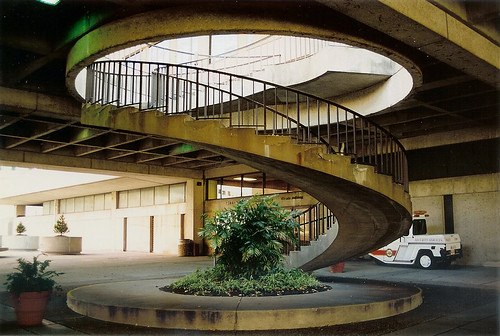
Although the helical stair was elegant, its surroundings were bleak at best. Much like the space underneath the elevated lanes of Interstate 70 that divide Downtown from Laclede's Landing, the underside if the plaza resembled the lowest depths of a parking garage. No amount of lighting or decoration could improve the cavern-like space. Driving on Carondelet Avenue was like going through a tunnel. Both the County Administration Building and the Courts Building greet the surrounding streets of Clayton with blank walls.
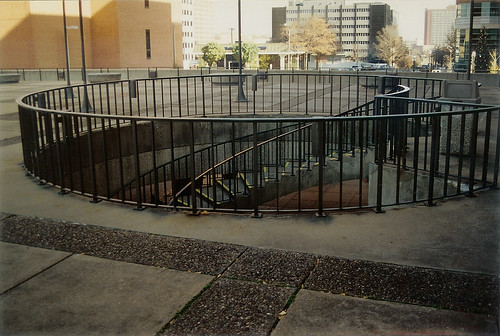
At the top of the staircase, conditions were not much better. The plaza level was isolated and typically barren and lifeless except for the occasional smokers venturing out of the surrounding buildings. I was always amused and somewhat bewildered that St. Louis County would set up its Christmas tree on the elevated plaza directly over the street below.
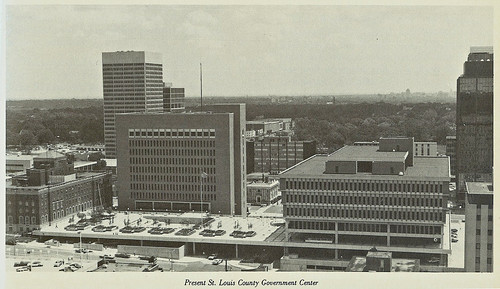
A 1976 aerial view of the elevated plaza and government buildings from the book Clayton: A History.
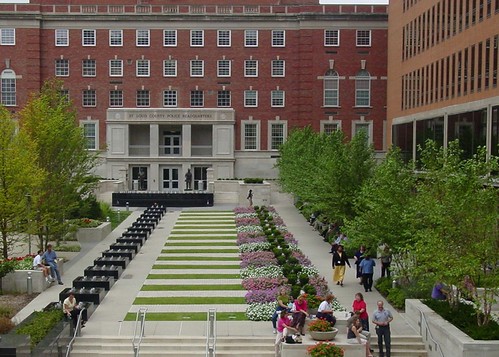
Fortunately in 2000 the elevated plaza, which had been steadily deteriorating, was demolished and replaced with an attractive at-grade park and plaza space designed by HOK as a memorial to police and firefighters that have died in the line of duty (photo from St. Louis County's website). Unfortunately, Carondelet Avenue was closed and removed between Meramec and Central as part of the process. The elegant floating helical stair also met its demise and was replaced with a very plan switch-back stair to 2nd level entrance of the Courts Building.
Elevated plazas were a favorite scheme of modern-era planners and architects who used them liberally government centers, civic spaces, and urban renewal projects such as the Mansion House complex which was begun in 1962. A plaza at the second level connects the various buildings of the complex and is almost always devoid of life or activity. That there is an interstate highway just to the east separating the complex from the Arch grounds and creating an endless deafening roar at the plaza level could be a partial explanation for its failure, but generally, the fact that the elevated spaces are sequestered from street level activity dooms them to desolation.
In the 1960's a series of elevated plazas was considered for completing the final blocks of the Gateway Mall east of the Civil Courts Building. Fortunately this plan never left the drawing board. Amazingly however almost 50 years later, some are calling for raising the level of Luther Ely Smith Park east of 4th street and building a block wide plaza or bridge to connect to the Arch grounds across Memorial Drive and the interstate below. While not elevated on the east and west ends, this block would have similar isolation issues shared by the urban planning disasters of the 1960's due to the fact that this new plaza or park space would disconnected from its surroundings to the north and south. Worse though would be the dark dreary tunnel like space created underneath the bridging plaza just like what existed at the County Government Center.
As has been clearly pointed out by City to River, the cost associated with adding another layer of infrastructure to the problem of connecting Downtown to the Arch grounds far outweigh the benefits. Spending large sums of money on a new block-wide bridge that would be a maintenance issue in the future and only connect one block of Downtown to the Arch just doesn't make sense. What makes sense is removing the deteriorating infrastructure that is the soon to be former I-70 and replacing it with an urban boulevard which would provide restored connections along its entire 1.4 mile length.


No comments:
Post a Comment